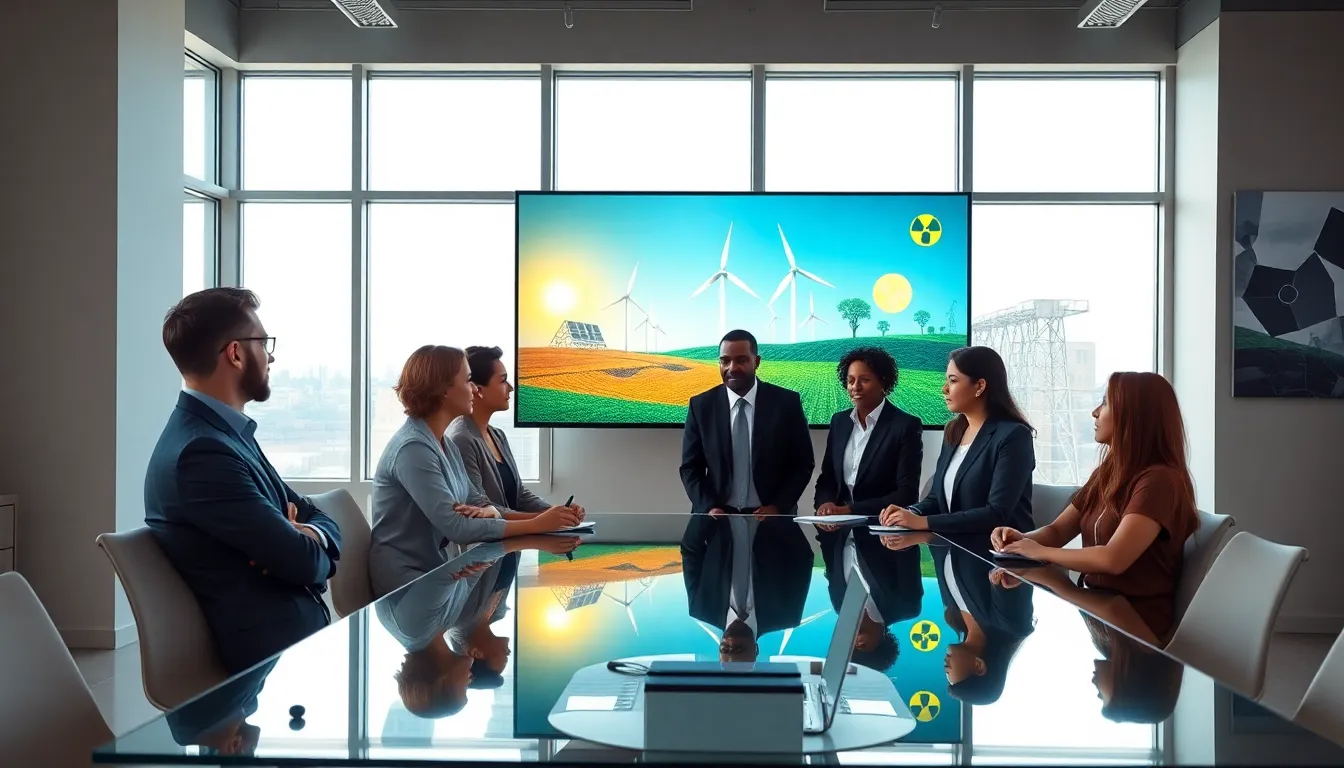In a world so plugged in that even toasters have Wi-Fi, the way we generate and use energy is more crucial than ever. Picture this: your smart home is whispering sweet nothings to your devices, making them more efficient, while your backyard solar panels are soaking up the sun like a lazy cat. Sounds idyllic, right? Let’s jump into the whirlpool of power generation, from the inevitable fossil fuels to the radiant rays of renewable energy, and see how we can harness that power (pun absolutely intended) efficiently.
Table of Contents
ToggleUnderstanding Power Generation Types

Energy generation is a broad field filled with various methods. Understanding these types allows us to grasp the pros and cons that come with each.
Renewable Energy Sources
Renewable energy sources, such as solar, wind, and hydroelectric power, are the rock stars of the energy world. They harness natural processes and are often sustainable. For instance, solar panels capture sunlight and convert it into electricity. Wind turbines, on the other hand, use the kinetic energy of the wind to spin blades and generate power. Harnessing these sources not only reduces reliance on fossil fuels but also leads to lower emissions. In fact, experts estimate that renewables could supply nearly 85% of global power needs by 2040. Talk about a bright future.
Fossil Fuels and Their Impact
While fossil fuels, including coal, oil, and natural gas, have historically been the backbone of power generation, their time in the spotlight should come to an end. Not only do they contribute to greenhouse gas emissions, but their extraction and consumption also pose significant environmental risks. Did you know that burning fossil fuels accounts for about 70% of global CO2 emissions? Transitioning to cleaner alternatives is no longer just a good idea, it’s a necessity.
Nuclear Energy as a Power Source
Nuclear energy often sparks debate. It’s dubbed the ‘cleaner’ fossil fuel alternative because it produces minimal greenhouse gas emissions. The process involves splitting atomic nuclei to release massive amounts of energy. But, concerns surrounding radiation, nuclear waste, and catastrophic failures cast a long shadow over its appeal. Balancing these risks against the need for low-emission energy has become a hot topic among policymakers and environmentalists alike.
Exploring Energy Storage Options
One challenge with renewable energy is its intermittent nature. To make the most of these energy sources, effective storage options must be explored.
Batteries and Their Functions
Batteries play a crucial role in energy storage. The rise of lithium-ion batteries has transformed the energy landscape, powering everything from smartphones to electric vehicles. But it’s not just about convenience: batteries help balance supply and demand, ensuring that excess energy generated during peak times can be used later. Emerging alternatives such as solid-state batteries and flow batteries promise even greater efficiency and longevity.
The Role of Hydropower
Hydropower remains one of the most significant sources of energy storage, thanks to its ability to store potential energy in water reservoirs. When energy demand peaks, stored water can be released to generate electricity instantly. This rapid-response capability makes hydropower a reliable source in balancing grid demand, proving that sometimes, nature knows best.
Innovations in Energy Storage Technology
Innovation doesn’t stop at current technologies. Research into pumped hydro storage, gravity storage, and even hydrogen fuel cells is actively being pursued, aiming to expand the versatility of energy storage solutions. These innovative strategies indicate a bright future for energy management that maximizes renewable energy use.
Maximizing Energy Efficiency in Usage
Generating energy is just one piece of the puzzle: using it efficiently is just as crucial. A variety of strategies can enhance energy efficiency on both large and small scales.
Smart Grids and Their Benefits
Smart grids are revolutionizing the way electricity is distributed and consumed. By integrating digital technology with electricity networks, smart grids allow for real-time communication between energy providers and consumers. This leads to improved reliability, reduced energy loss, and lower costs. Plus, they empower users to monitor and manage their energy use better, leading to more informed decisions about consumption.
Energy Management Systems
Energy Management Systems (EMS) put the power back in your hands (figuratively and literally). These systems analyze energy consumption patterns, providing insights that help reduce usage and costs. Companies that adopt EMS often notice a significant decrease in energy bills, solidifying the notion that managing energy smarter is not just beneficial, but necessary.
Practical Tips for Energy Conservation
On a personal level, energy conservation can be as simple as turning off lights in empty rooms or unplugging devices when not in use. Utilizing energy-efficient appliances, adjusting thermostat settings, and even investing in smart home technology can further lessen their carbon footprint. Small changes can lead to significant savings and collectively make a difference.
Future Trends in Power Generation and Consumption
The energy landscape is ever-evolving, influenced by innovations and shifts in global consumption patterns. Keeping an eye on these trends equips individuals and companies with knowledge to adapt.
Impact of Emerging Technologies
Emerging technologies, such as artificial intelligence and blockchain, are beginning to shape energy generation and consumption. For instance, AI can optimize energy distribution across networks, while blockchain might provide transparent energy payment systems, fundamentally changing how consumers engage with energy providers.
Global Trends in Energy Consumption
Global energy consumption trends also indicate a shift towards decarbonization alongside electrification. Countries are focusing on reducing carbon footprints with aggressive policies aimed at promoting renewable energy. For example, several nations have pledged to achieve net-zero emissions by 2050, pushing for substantial increases in renewable energy adoption and stimulating new initiatives in green technologies.





